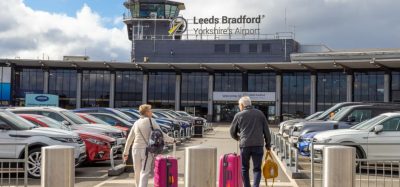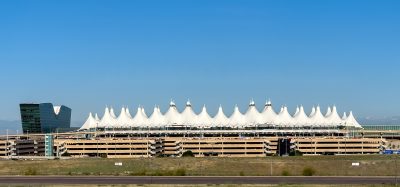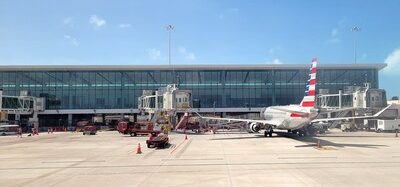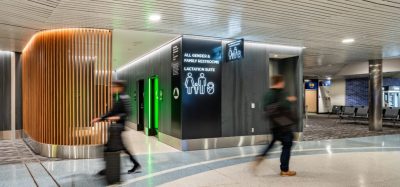Stansted Airport airspace upgrade enters initial phase
Posted: 2 March 2020 | International Airport Review | No comments yet
The initial phase will see Stansted Airport host a series of focus groups encouraging people to provide their views on any change to the airport’s airspace.


Credit: London Stansted Airport
Within the UK government’s Airspace Modernisation Programme – in which the government requested that all UK airports review how new technology can best be used to make the airspace that they use more efficient – London Stansted Airport (STN) has now begun work to redesign the network of corridors and flight paths that aircraft use when travelling to and from the airport.
At the beginning of March 2020, Stansted Airport will host a series of focus groups that will encourage people to provide their views on the broad principles that Stansted should follow when designing any change to its airspace. The groups will include members of the public, aviation industry, local businesses, elected representatives, special interest groups, national organisations and community representatives. A full public consultation on Stansted’s future airspace design will begin in 2021.
Topics that will be discussed by the focus groups include: whether it is better to concentrate flights over one area or spread them out more evenly; and how it should account for other airspace users, such as gliders and drones.
Join us live: Shaping the Next Generation of Hold Baggage and Air Cargo Screening
Join us live for an insightful webinar on 11th December at 14:00 GMT, in collaboration with Smiths Detection, as we explore the strategic balance of operational efficiency, regulatory compliance, and sustainability in high-volume security environments.
This session offers a focused look into future-proofing your security strategy.
Key learning points
- Cost Reduction: Strategies to minimize bag travel time while simultaneously reducing operational costs.
- Regulatory Roadmap: Insights into the next wave of regulatory changes and their impact on future investment decisions.
- Sustainable Systems: Practical approaches to building sustainability into security systems and lowering the total cost of ownership (TCO).
- Scalable Solutions: Real-world examples of scalable systems supporting current airport growth and preparing for tomorrow.
Register now for expert insights, case studies, and actionable strategies on operational efficiency!
A proposed timeline for Stansted Airport’s airspace modernisation programme is as follows:
- 2020 – gather early views on design principles
- 2021 – full public consultation
- 2022 – submit updated proposal to Civil Aviation Authority (CAA)
- Early 2023 – CAA to assess proposal for Stansted’s airspace modernisation
- Late 2023 – the earliest new flight paths could start to be introduced.
Nick Millar, Operations Director at London Stansted, said: “When delays start to build up on our roads or rail network, the impact it can have on the ground is all too obvious. It’s easy to forget that we have a similar network in the sky, which our airlines and other airspace users rely on to get from A to B. This upgrade of the UK’s airspace is long overdue and will help make flying much more efficient and environmentally friendly. But we understand the impact aircraft can have on those people living near an airport, which is why we are undertaking a thorough programme of engagement to understand what matters most to our neighbours.”
Millar continued: “This initial phase will help us frame the way we develop our proposals, which will be subject to full public consultation next year. The views of stakeholders and local residents are central to this process, and anybody who wishes to take part is welcome to submit their views.”
As with road and rail, airspace is a critical part of the UK’s national infrastructure. However, much of its design has remained unchanged since the 1950s. With new technology now available – for example, satellite navigation systems – it is now easier for the facilitation of a more efficient use of airspace, as well as decreasing the need for stacking and delays and a reduction of emissions.
Under the government programme, all UK airports are responsible for reviewing their operations up to an altitude of 7,000 feet, and NATS, the UK’s national air traffic service provider, is responsible for aircraft routings above that altitude.
Stay Connected with International Airport Review — Subscribe for Free!
Get exclusive access to the latest airport and aviation industry insights from International Airport Review — tailored to your interests.
✅ Expert-Led Webinars – Gain insights from global aviation leaders
✅ Weekly News & Reports – Airport innovation, thought leadership, and industry trends
✅ Exclusive Industry Insights – Discover cutting-edge technologies shaping the future of air travel
✅ International Airport Summit – Join our flagship event to network with industry leaders and explore the latest advancements
Choose the updates that matter most to you.
Sign up now to stay informed, inspired, and connected — all for free!
Thank you for being part of our aviation community. Let’s keep shaping the future of airports together!


















